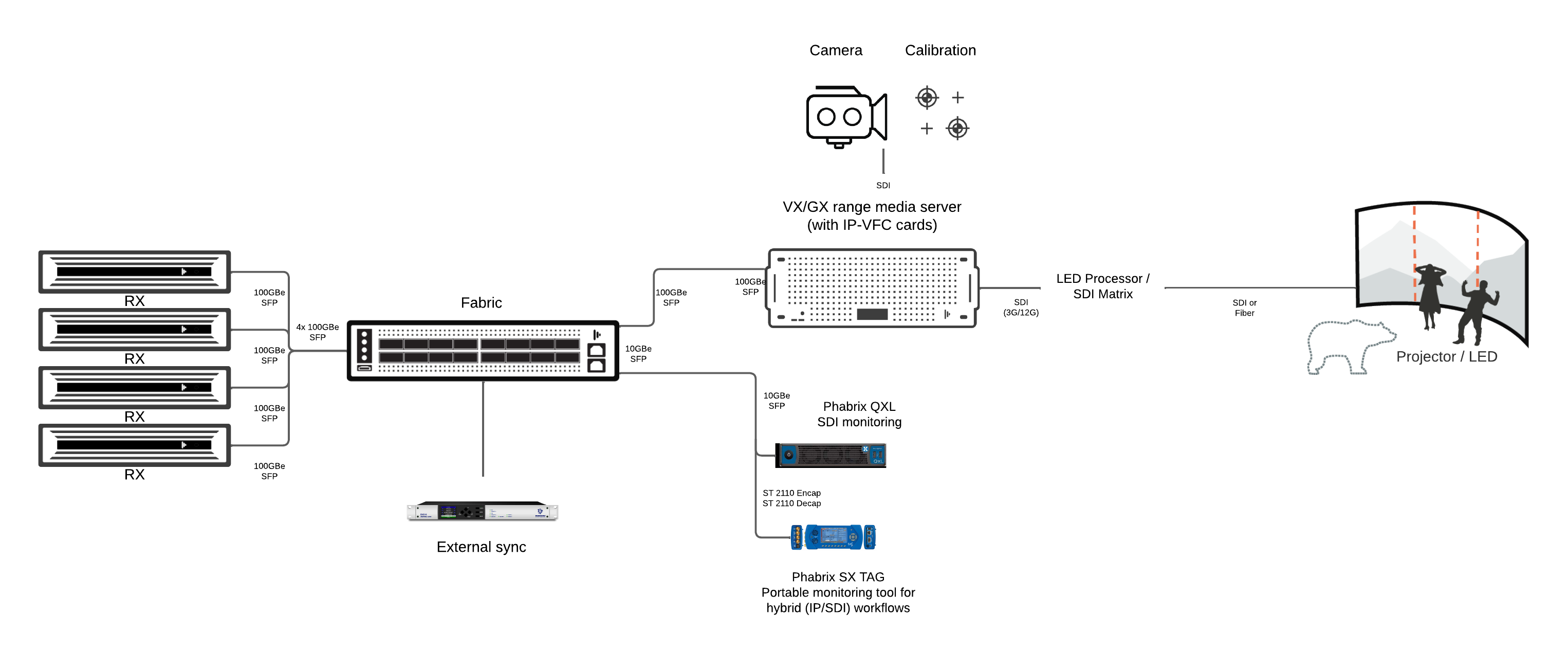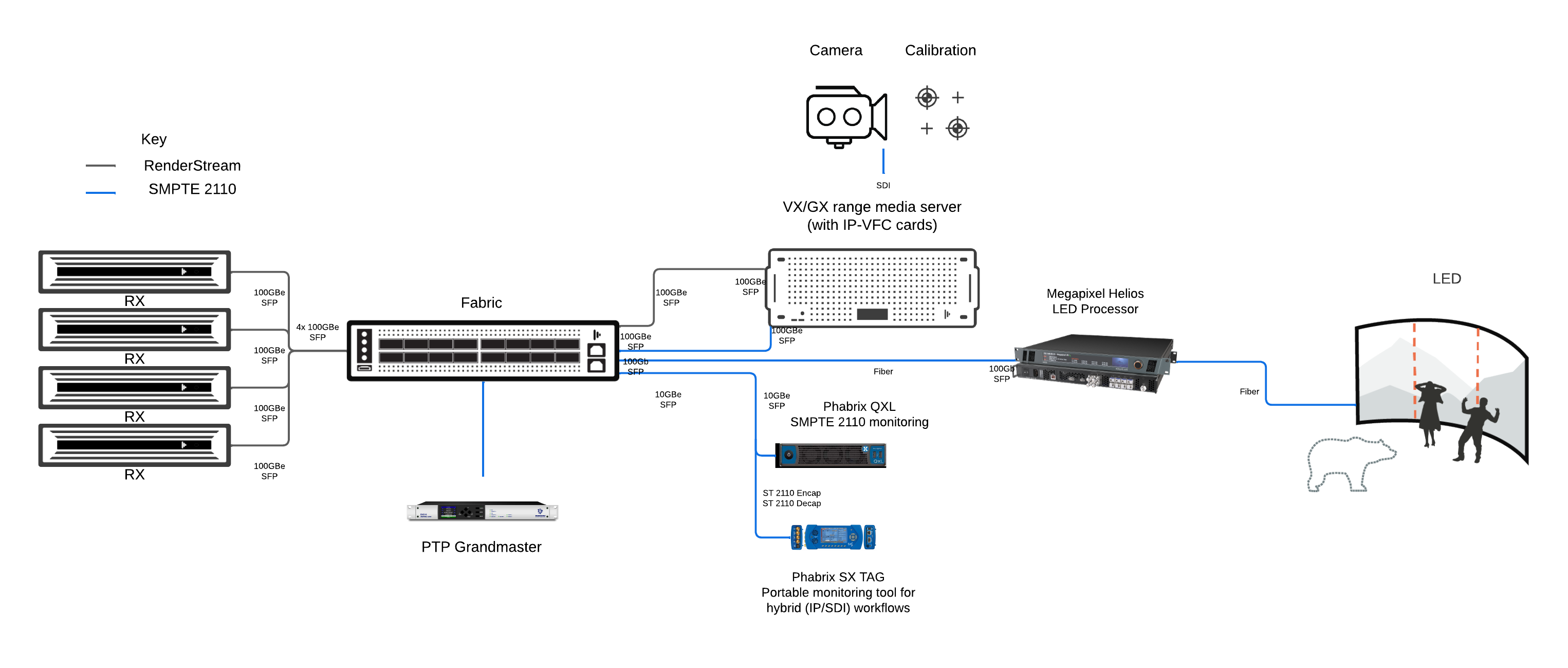IP-VFC
System configuration
IP-VFC System Configuration
The IP-VFC can be used in 2 main ways, either with an SDI SFP attached to output 12G SDI signals directly or to output ST 2110 video signals over a network. Instructions for how to configure the card in each mode are shown below.
We recommend using the IP-VFC card with the following configurations:
System configuration in SDI mode

System configuration in ST 2110 mode

The ST 2110 mode configuration provides a plug and play solution for IP-VFC. Please note that we recommend and validate our ST 2110 workflows with Disguise Fabric network switches. If you are unable to use a Fabric switch or otherwise want to use a different network switch, please be aware this will require you to manually configure the switch correctly. If you want to use a different network switch, please let us know by reaching out to support@disguise.one so we can help ensure a successful project delivery.
We also strongly recommend the use of multimode OM4 fiber cables instead of DAC cables with an ST 2110 system using IP-VFC as we have identified variable performance when using DAC cables.
Please note: It is extremely important that users keep the dust caps on fiber optic connectors when not in use to prevent fiber failure.
Third-party compatible devices
LED Processor
As of June 2024, the Megapixel Helios is the only LED processor on the market that supports ST 2110 video inputs that we have tested against with ST 2110 mode. New LED processors will likely be available by the end of 2024, such as Brompton’s SQ200 processor which will support up to 4 streams of 4K video at both 4:4:4 and 4:2:2 up to 12-bit via a 100Gb input. The Encore3 image processor from Barco also supports ST 2110 video inputs.
The Megapixel Helios 100GbE input card supports up to 4 streams at both 4:4:4 and 4:2:2 up to 12-bit. The Megapixel Helios must also be updated to v22.11 or later. Learn more about the Megapixel Helios and 100GbE input here.
Genlock in ST 2110 Mode
IP-VFC can genlock in ST 2110 mode in 2 ways:
-
PTP (Precision Time Protocol) is used for synchronisation in signal-over-IP carried over the network cable to the card and can be configured in your network using a PTP master. You can find more information about PTP here and here.
-
External Source is the normal method for genlocking a signal when connected to the BNC connector on the back of the server. Internally, the genlock signal is routed to the IP-VFC card within the backplate and then fed to the GPU from there.
Please note: External Source mode is available when outputting over SDI, or when outputting with ST 2110 video over a network. Please note that both modes cannot be used together.